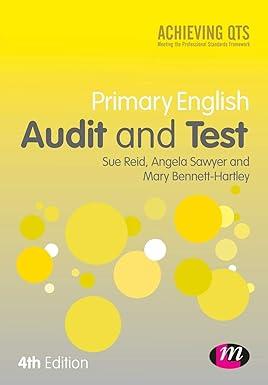Question
XYZ Manufacturing utilizes a traditional cost accounting system and produces two products X and Z. During 2017 the organization produced and sold 2,100,000 units of
XYZ Manufacturing utilizes a traditional cost accounting system and produces two products X and Z. During 2017 the organization produced and sold 2,100,000 units of product X and 900,000 units of product Z. The table below reflects the direct costs assigned to the two products.
|
| Product X | Product Z |
| Units produced and sold | 2,100,000 | 900,000 |
| Direct labor cost per unit | $0.50 | $0.50 |
| Direct material cost per unit | $0.75 | $0.50 |
XYZ currently uses direct labor cost to allocate overhead to each of its products. Overhead costs are composed of the following components with the following amounts incurred in 2017.
| Overhead component | Overhead Amount |
| Materials purchasing | $180,000 |
| Machine setups | 375,000 |
| Product packaging | 280,000 |
| Machine testing and calibration | 300,000 |
| Machine maintenance and cleaning | 287,000 |
| Total | $1,422,000 |
Question
Calculate the overhead application rate under the traditional cost accounting system that uses direct labor cost as the cost driver. Determine the total amount of overhead to be charged to each unit of Product X and Product Z. Determine the total cost per unit of Product X and Product Z using the traditional cost accounting system.
XYZ Manufacturing has been concerned that the current cost accounting system is not providing them with appropriate information for product pricing decisions. The plant accountant has spent time gathering information about the components of overhead and captured the following information about the cost drivers for each component, and the breakdown of the cost driver used for each product during 2017
| Overhead component | Cost Driver | Cost Driver Units | Product X Cost Driver Units | Product Z Cost Driver Units |
| Materials purchasing | Number of purchase orders | 100 | 25 | 75 |
| Machine setups | Number of setups | 250 | 100 | 150 |
| Product packaging | Number of packages | 1,400,000 | 500,000 | 900,000 |
| Machine testing and calibration | Number of tests | 3,000 | 2,000 | 1,000 |
| Maintenance and cleaning | Number of batches | 250 | 50 | 200 |
Questions
Calculate the total amount of overhead allocated to each of the Products (X and Z) using the information gathered for activity-based costing. Calculate the overhead allocated per unit based on the number of units of each product produced. Calculate the total product cost for each unit of Product X and Z.
The company has charged a selling price per unit for Product X of $3.00 per unit and for Product Z of $2.00 per unit. Determine the gross profit for each unit of Product X and Product Z using traditional product costing with the single factor to allocate overhead. (Note: gross profit is the difference between the selling price per unit and the total cost of producing each unit.)
Using the same selling price per unit in requirement 3 determine the gross profit for each unit of Product X and Product Z using activity based costing.
If the company converts to activity based costing would you recommend that the company set a different selling price per unit? Explain the rationale for your recommendation?
Step by Step Solution
There are 3 Steps involved in it
Step: 1

Get Instant Access to Expert-Tailored Solutions
See step-by-step solutions with expert insights and AI powered tools for academic success
Step: 2

Step: 3

Ace Your Homework with AI
Get the answers you need in no time with our AI-driven, step-by-step assistance
Get Started


